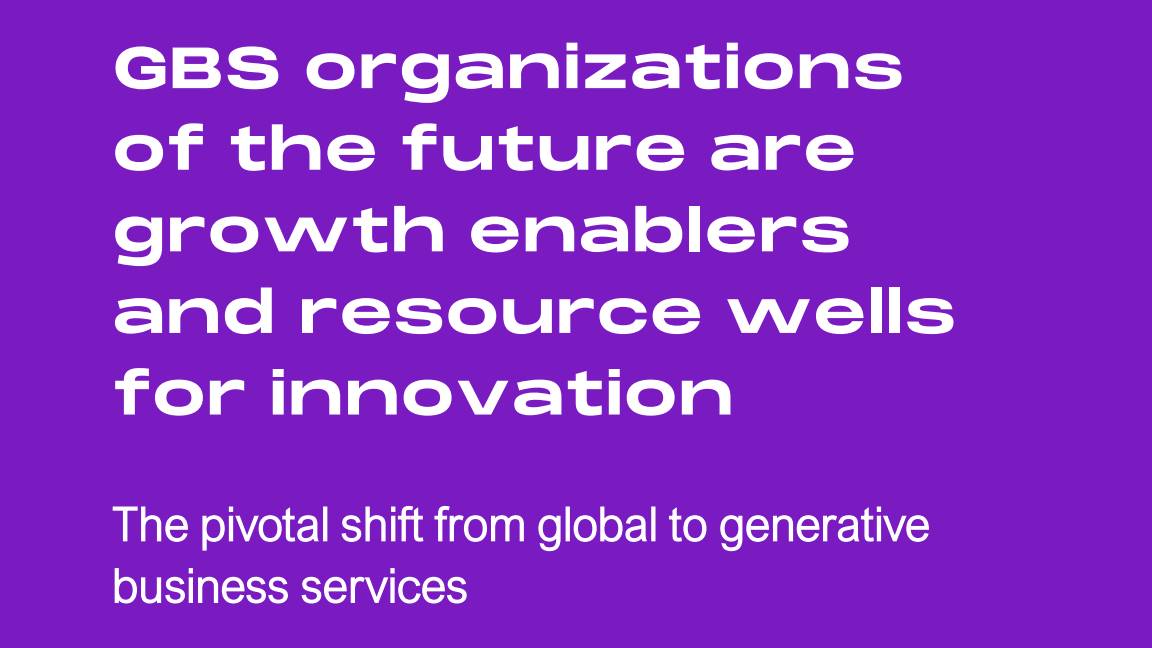Why Aberdeen City Council turned to Juniper Networks to meet connectivity goals
With a combination of improved access and better automation, Aberdeen City Council is aiming to radically improve the user experience across its estate


Aberdeen City Council serves 26,500 ‘learners’, the term it uses for students, alongside 8,000 educators and corporate staff across 166 sites. Approximately 65 of these sites are primary schools, with the remainder including libraries, council buildings, and corporate sites.
Connecting all of these groups to Wi-Fi and ensuring quality end-user experience has been a huge challenge on its own, but to top it off the council is also undergoing a major modernization to improve its network reliability and security. To this end, the council has sought a zero trust and AI-native approach, requiring an overhaul of existing systems.
The Scottish Government has set the goal of providing every student with their own device and adequate Wi-Fi connectivity, giving Aberdeen City Council a concrete target to work toward – and a sharp improvement in user experience to provide.
It’s a journey that led it to partner with Juniper Networks. In the nine months since the two set about putting its project into action, the council has doubled its Wi-Fi coverage and reduced the time it takes to get devices connected at a new site.

ITPro sat down with Iain Pilbeam-Cornfield, infrastructure architect at Aberdeen City Council, at Juniper Networks’ AI-Native Now London event, to explore the project in more detail.
A complex landscape to overhaul
Choosing the right partner for its overhaul was critical, as Pilbeam-Cornfield tells ITPro.
“We’ve got a rather mixed estate historically, so we have about six different vendors, from different ages as well some of our older equipment [is from] around 2004 and that's end of life and difficult to maintain security of and access controllers and firewalls, etc.”
Sign up today and you will receive a free copy of our Future Focus 2025 report - the leading guidance on AI, cybersecurity and other IT challenges as per 700+ senior executives
Part of Aberdeen City Council’s aim was to refresh this legacy equipment. But Pilbeam-Cornfield was also keen to bring together the corporate and education teams at the council via a simplified management tool.
The team looked at the Gartner Magic Quadrant for Wi-Fi and switching, leading it to run proof of concepts with Juniper Networks and three other vendors.
“Where Juniper really shone was it's looking at end-user metrics all of the time, so it's really focused on the end-user rather than just infrastructure for infrastructure’s sake.”
“The other thing is that we’re looking at a cloud-first approach and doing a new education tenancy within Microsoft Azure. Juniper links in nicely with that, it’s open application programming interface (API) but they’ve also got direct links in with Microsoft technologies like Teams and such.”
AI and automation for improved network fixes
One of the key points of Aberdeen City Council’s transformation strategy was to embrace an AI-native approach to networking and resilience. With Juniper Networks, this has primarily meant adopting Mist AI, the firm’s network analytics service with foundations in AI and machine learning (ML), as well as its AI assistant Marvis.
Mist has enabled the council to quickly identify old fibers incapable of delivering the gigabit speeds for which they aim. For example, Pilbeam-Cornfield describes one site where Mist had flagged a problematic fiber cable that the council had thought was 90 meters long, but which upon closer inspection turned out to be 330 meters long, a distance it wasn’t rated for.
Automatically identifying the cables as an issue allowed the council to lower the bandwidth of the attached modules and send out a fiber tester and replace the cable altogether.
The council is aiming for a similar combination of manual and automatic fixes when it comes to its use of Marvis. The AI assistant is capable of monitoring networks, producing reports on issues in plaintext, and responding to user inputs using natural language processing (NLP).
While the service desk team manager is currently able to interface with Marvis, Pilbeam-Cornfield is aiming for Marvis to be able to raise tickets directly in ServiceNow. This will allow network engineers to see problems as soon as they’re raised, in a platform with which they’re comfortable and already use daily.
Aberdeen City Council has also adopted Marvis Minis, Juniper Networks’ digital twin solution for networking. This solution uses ML to probe connections alongside Mist AI, with the aim of spotting potential network issues before they become a problem.
Juniper claims it could be especially useful for monitoring web services overnight, reducing the need for staff to work night shifts even for critical services, and Pilbeam-Cornfield says his team already uses it to monitor internal resources as well as the council’s Teams, SharePoint, and Outlook.
Lowering energy costs and reducing manual processes
While Aberdeen City Council has doubled its coverage within each site – at least quadrupling the density in each case – it’s using the same or even less power on average.
This is down to the better efficiency of new access points (APs), which only require around a third of the power as their legacy predecessors. Pilbeam-Cornfield is quick to point out that Aberdeen City Council won’t know how this adds up for costs or its sustainability strategy until it’s completed rollout in every site. But for now, the upgrades are leading to a better user experience for the same or lower cost.
Pilbeam-Cornfield gives one example of an academy that converted a library into two classrooms, leaving the one AP that had previously serviced the ten or so library users with no issue unable to meet the needs of the 64 or so devices now running across the two rooms.
Using Mist’s Occupancy Analytics, Pilbeam-Cornfield’s team was able to automatically identify the issue and install another AP to better service the site.
RELATED WHITEPAPER

Aberdeen City Council has achieved automation in other areas like the automation of packet captures, which Pilbeam-Cornfield describes as "the bane of everyone in network engineering's life”.
“In terms of the packet side, we’re using the Juniper network access control (NAC) solution,” he explains.
“So the admin overhead with that is having multiple different vendors and going through CUIs for some, GUIs for others. So you would have to go and configure like ‘Okay, we need this port for education, this port for corporate’, or whatever was required.
“We had one of the teachers at our proof of concept site come out and raise her arms in joy..."
“With the NAC, what we can do is we can profile based on the devices, based on certificates because we're now integrating with Azure as well, using Microsoft's cloud public key infrastructure (PKI).”
This flexibility is crucial to Aberdeen City Council, as some of the devices or locations that it oversees change use cases from day to day. For example, a device may be used by an educator one day and a learner the next, or a room used by classes may temporarily be used by the NHS. Through its approach with Juniper Networks, Pilbeam-Cornfield says these profiles can be “dynamically assigned, without our intervention”.
With its massively improved coverage and slashed issue tickets, there’s cause for optimism in Aberdeen. Pilbeam-Cornfield cautions against celebrating too early, noting that the council hasn’t quite finished its rollout journey, but acknowledges that for the six months of operations across multiple sites, operations have been smooth.
With Holyrood’s one-to-one goal for students and devices in mind, Aberdeen City Council picked a primary school as its initial proof-of-concept site. This has been running for nine months – and staff there are already feeling the results.
Keeping Holyrood’s one-to-one goal for students and devices in mind, Aberdeen City Council picked a primary school as its initial proof-of-concept site. This has been running for nine months – and staff there are already feeling the results.
“We had one of the teachers at our proof of concept site come out and raise her arms in joy because she had managed to get all of her class attached to the network, all at once,” Pilbeam-Cornfield recounts.
“She hadn't had that before, it used to be that 14 devices could connect and that would be it, that would be the absolute limit. With a class size of 30 – and with our national goal being a one-to-one device ratio to learner, it just didn’t provide the connectivity we needed.”
For others looking to achieve similar results – Pilbeam-Cornfield notes that council budgets are “always shrinking” – he urges leaders to look beyond their comfort zones for vendors.
“What was really important from my team’s point of view was proof-of-concepting different vendors, different capabilities, to come up with your requirements as well.” In the case of Aberdeen City Council, this process revealed a number of requirements outside of the network-specific focus it had held going in.
“What Juniper actually helps us to do is interact with, yes, other parts of infrastructure but also simplify how we manage that infrastructure. Because at the end of the day, we're not here to manage infrastructure, we're here to manage end-user expectations and to give them the best experience possible.”

Rory Bathgate is Features and Multimedia Editor at ITPro, overseeing all in-depth content and case studies. He can also be found co-hosting the ITPro Podcast with Jane McCallion, swapping a keyboard for a microphone to discuss the latest learnings with thought leaders from across the tech sector.
In his free time, Rory enjoys photography, video editing, and good science fiction. After graduating from the University of Kent with a BA in English and American Literature, Rory undertook an MA in Eighteenth-Century Studies at King’s College London. He joined ITPro in 2022 as a graduate, following four years in student journalism. You can contact Rory at rory.bathgate@futurenet.com or on LinkedIn.
-
 Can enterprises transform through startup theory?
Can enterprises transform through startup theory?In-depth For big corporations, the flexibility, adaptability, and speed of a startup or scale-up is often the total opposite of what’s possible within their own operations
-
 AI is creating more software flaws – and they're getting worse
AI is creating more software flaws – and they're getting worseNews A CodeRabbit study compared pull requests with AI and without, finding AI is fast but highly error prone